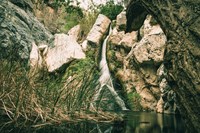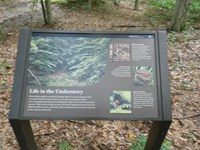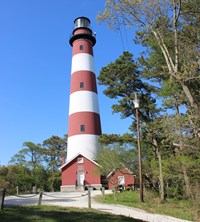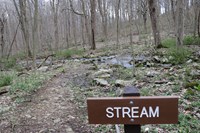- Mount Rainier National Park (3)
- Prince William Forest Park (3)
- Assateague Island National Seashore (2)
- Canyon de Chelly National Monument (2)
- Catoctin Mountain Park (2)
- Chesapeake & Ohio Canal National Historical Park (2)
- Chiricahua National Monument (2)
- Coronado National Memorial (2)
- Death Valley National Park (2)
- Show More ...
- Inventory and Monitoring Division (3)
- Great Lakes Inventory & Monitoring Network (2)
- Greater Yellowstone Inventory & Monitoring Network (2)
- Natural Resource Stewardship and Science Directorate (2)
- Appalachian Highlands Inventory & Monitoring Network (1)
- Arctic Inventory & Monitoring Network (1)
- Central Alaska Inventory & Monitoring Network (1)
- Chihuahuan Desert Inventory & Monitoring Network (1)
- Crown of the Continent Research Learning Center (1)
- Show More ...
Showing 25 results for toads ...
Aliante Parkway Kiosk
- Type: Place

This interpretive kiosk is located at N. Aliante Pkwy & W. Moonlight Falls Ave. The kiosk describes the history of scientific research at Tule Springs, safety tips, park regulations, and a map of the monument. This area features relatively flat terrain, creosote desert scrub habitat, and views of the Las Vegas and Sheep ranges.
- Type: Article

National parks play a central role in protecting biodiversity. Amphibians—the frogs, toads, and salamanders are some of the most fascinating, sensitive, and threatened species on our planet. A new study shows that national parks are home to some of the most diverse communities of amphibians in the US. Read about amphibian biodiversity hotspots in parks and NPS actions to protect these animals in this article.
- Type: Article

Amphibians are excellent ecological indicators due to high sensitivity to slight changes in their environment. Worldwide declines in amphibian populations prompted the U.S. Geological Survey to begin a national effort to document trends of amphibian populations on federal lands. Research on amphibians in Glacier, particularly boreal toads, began in 2000. Researchers are documenting changes to population size, survival rates, and occupancy of suitable habitat.
Darwin Falls
- Type: Article

To steward amphibians effectively, managers need basic information about which species live in parks. But species lists need constant maintenance to remain accurate. Due to recent efforts, the National Park Service now has an up-to-date amphibian species checklist for almost 300 parks. This information can serve as the basis for innumerable conservation efforts across the nation.
- Type: Article

To steward amphibians effectively, managers need basic information about which species live in parks. But species lists need constant maintenance to remain accurate. Due to recent efforts, the National Park Service now has an up-to-date amphibian species checklist for almost 300 parks. This information can serve as the basis for innumerable conservation efforts across the nation.
Aquatic Citizen Science at Mount Rainier
Toad Suck Park
- Type: Place

Toad Suck Park is only a short trip to many other attractions, located where the landscape on the Arkansas River is transitioning from the delta to the Ouachita Mountains to the south and west with the Ozark Plateau to the north and east. Cadron Settlement is only a few minutes away, the historic Toad Suck Ferry is just across the river, and Little Rock or North Little Rock a short distance away. Many other places are all within easy day trips from this beautiful quiet camp.
Amphibians in the Potomac Gorge
Species in the Spotlight: Yosemite Toad
- Type: Article
Collecting soil samples at Lost Lake which are utilized to isolate potentially beneficial, naturally occurring bacteria from the boreal toad’s environment.
Life on the Forest Floor
Life in the Understory
- Type: Article

Amphibians are cryptic and charismatic animals. Because they depend on land and water habitats, their presence or absence in a given habitat can tell us a lot about overall ecosystem health--so it’s concerning that 40% of these animals are threatened with extinction worldwide. In Greater Yellowstone, ecologists have been studying five native amphibians for decades. A special series of papers reveals their findings.












